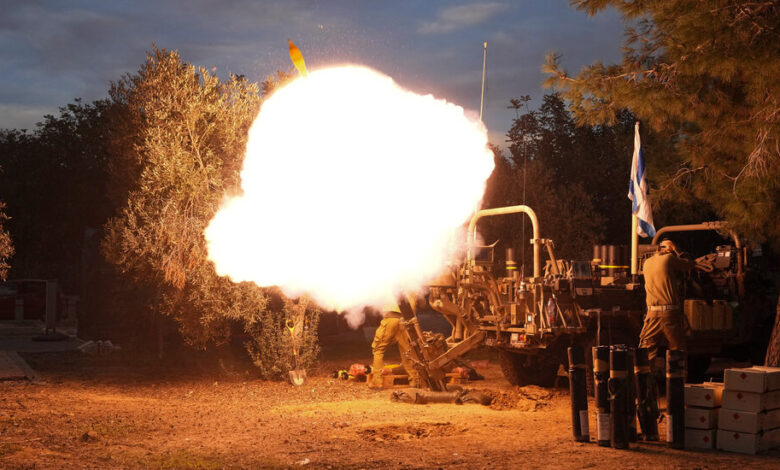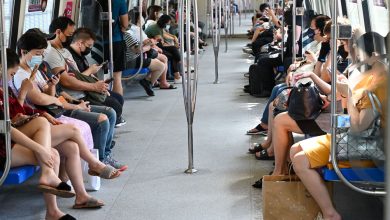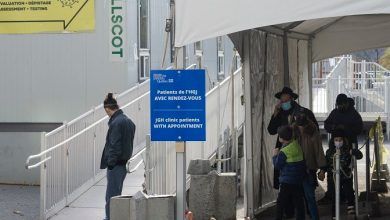Hamas Leader Is in Egypt for Gaza Talks: Live Updates

Ahmed Fouad Alkhatib was at home in San Francisco when the panicked calls started. An Israeli airstrike on Thursday had hit his family’s home in Rafah, in the so-called safe zone of the Gaza Strip, where hundreds of thousands of people have sought refuge from the war.
Soon, his phone was flooded with news footage of the home, where he used to go for family barbecues and to play with his grandmother’s ducks. He watched neighbors scramble over its smoking ruins, looking for survivors.
Instead, they found at least 31 bodies, he said, including two women in their 70s, several people in their 60s, and nine children between the ages of 3 months and 9 years. More remain missing. He learned the names of the dead from texts and Facebook updates, spread out over hours and days.
“It was sickening and nauseating,” said Mr. Alkhatib, 33, a writer and vocal critic of Hamas who was granted asylum in the United States after the armed group took power in Gaza in 2007. “My heart was beating out of control with worry and fear. These are people I grew up with. It was a family home.”
The strike that killed many members of Mr. Alkhatib’s family is one of several in recent weeks that have hit zones where the Israeli military told people to go to avoid airstrikes, calling into question the advice and the safety of those who followed it.
The war began on Oct. 7, when Hamas-led gunmen attacked Israel, killing roughly 1,200 people and taking 240 more hostage. Since then, the Israeli military has carried out a massive air campaign and a ground offensive that has displaced 1.9 million people, roughly 85 percent of Gaza’s population, the United Nations says. The campaign has killed almost 20,000 people, according to Gazan health officials, obliterating whole branches of family trees. It has also destroyed the strip’s civilian infrastructure and economy and crippled hospitals.
Azmi Keshawi, a Rafah-based researcher for the International Crisis Group, an independent research organization, said he witnessed three airstrikes there last week: one on Sunday that killed 21 people, one on Monday that killed 11 and one on Tuesday that killed 15.
“The situation on the ground in Rafah is not so calm,” he said.
Nir Dinar, a spokesman for the Israel Defense Forces, said Israel has taken “significant steps to urge civilians in the northern Gaza Strip to move toward the safer area in southern Gaza, as well as taking feasible measures to mitigate incidental harm to civilians and civilian property during its operations.”
He declined to answer questions about the airstrikes in Rafah, but said “unfortunately Hamas is embedding itself in safer areas as well, choosing to do so on the expense of the safety of the residents of Gaza.”
Before the war, Rafah Province — which is roughly one third the size of Brooklyn — had a population of around 260,000. But in recent weeks, hundreds of thousands of people from towns to the north have fled there, and now there are signs that public order has begun to break down.
Last week, Philippe Lazzarini, head of the U.N. Relief and Works Agency, told reporters that on a recent visit to Rafah he watched Gazans stop aid trucks, raid their food and devour it on the spot.
“This is how desperate and hungry they are,” he said. “Everywhere you go, people are hungry, desperate and terrified.”
Mr. Keshawi, the researcher, said he fled his home in Gaza City in the north of the enclave and now lives in a tent on a Rafah sidewalk with his family. No one in Rafah, which lies on the border with Egypt, seemed to have been “ready to receive this amount of people,” he said.
“Living conditions in the shelters are really miserable,” he said. “They have a lot of diseases. You have to line up for hours to go to the bathroom. There is a lack of hygiene, a lack of services by the U.N. to clean up the garbage. Dirty water is running in between the tents.”
When the airstrike hit Mr. Alkhatib’s family home on Dec. 14, dozens of people were inside, and more were in the backyard. He said that was a reflection of the dire conditions in Rafah and the generosity of his uncle, Dr. Abdullah Shehada, 69, and his aunt, Zainab, 73. Both were killed in the strike.
“She opened up the house to dozens of people,” Mr. Alkhatib said, “If there is a building left standing, people squeeze in, and that’s a common feature of what is happening right now in southern Gaza.”
His aunt was a retired teacher at a U.N. school, and his uncle was a well-known physician, he said. The dead also included two more of his aunts, Fatma Nassman, 76, and Hind Nassman and an another uncle, Hassan Nassman, who were both in their 60s. Several children, including his 3-month-old cousin, Ellen, and his 4-month-old cousin, Iyla, were also among the dead.
Mr. Alkhatib said he knew of no justification for the strike: the house was not being used by Hamas.
“I am telling you from my heart, nothing was happening there,” Mr. Alkhatib said. “Even if there was some Hamas guy walking past the place, don’t destroy an entire house and kill everybody in it.”




